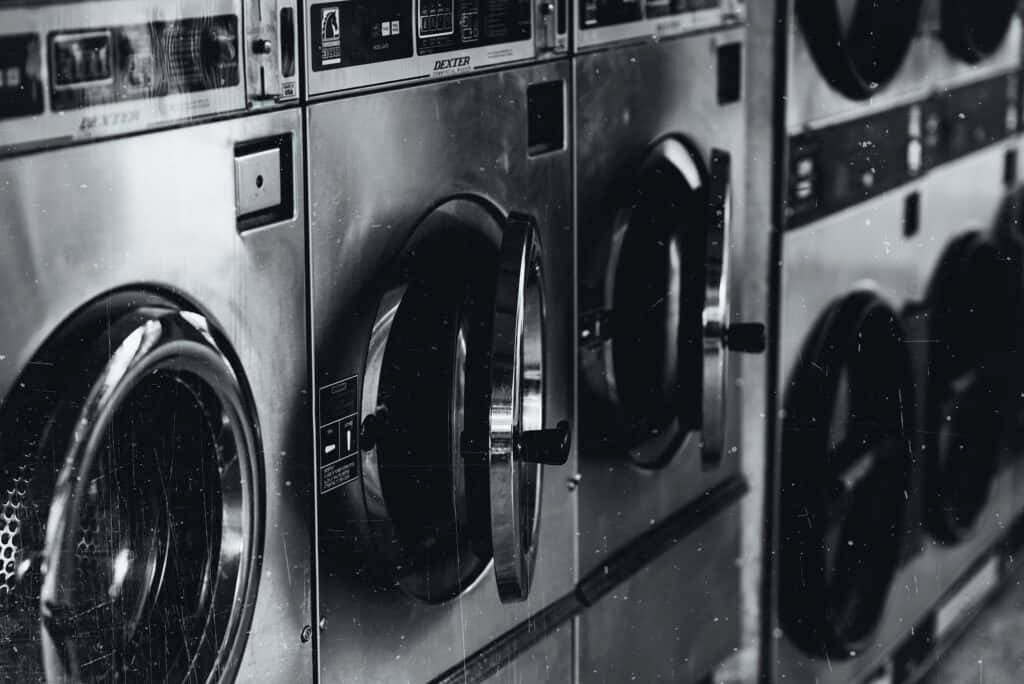Down And Synthetic Filled Gear Care: Essential Maintenance Tips

Down and synthetic-filled gear are popular choices for outdoor enthusiasts due to their ability to provide warmth and insulation in various weather conditions. Whether you have a down-filled sleeping bag, jacket, or synthetic-filled gear, it’s essential to understand how to properly care for and maintain them to ensure their longevity and performance.

Understanding Down and Synthetic Filled Gear
Before diving into the maintenance guide, it’s crucial to have a basic understanding of the differences between down and synthetic-filled gear.
When it comes to outdoor gear, insulation is key to staying warm and comfortable in cold weather. Two popular types of insulation used in outdoor gear are down and synthetic fill. Each has its own unique characteristics and benefits.
The Basics of Down-Filled Gear
Down is a naturally insulating material derived from the plumage of ducks or geese. It is highly effective in trapping heat and providing excellent insulation. The structure of the down consists of tiny, fluffy clusters that create air pockets, which help to retain body heat. This makes down-filled gear incredibly warm and lightweight.
One of the main advantages of Down is its exceptional warmth-to-weight ratio. It provides a high level of insulation without adding unnecessary bulk to your gear. Down is also highly compressible, allowing you to pack it down into a small size for easy storage and transportation.
However, down-filled gear requires special care to maintain its loft and heat-trapping properties. It is important to keep it dry, as moisture can cause the down clusters to clump together and lose their insulating ability. Regular fluffing and shaking of down-filled gear can help restore its loft and maximize its performance.
The Basics of Synthetic-Filled Gear
Synthetic fill, on the other hand, is made of synthetic fibers designed to mimic the insulation properties of down. These fibers are usually made of polyester or other synthetic materials. Synthetic-filled gear is generally more affordable than down-filled gear, making it a popular choice for budget-conscious outdoor enthusiasts.
One of the key advantages of synthetic fill is its ability to retain insulation even when wet. Unlike down, synthetic fibers do not clump together when exposed to moisture, allowing the gear to maintain its insulating properties. This makes synthetic-filled gear a great option for activities in wet or humid conditions.
In addition to its water-resistant properties, synthetic fill is also hypoallergenic, making it a suitable choice for individuals with allergies. It is easier to clean and dries faster than down-filled gear, which can be a significant advantage for those who frequently engage in outdoor activities.
However, like down-filled gear, synthetic-filled gear also requires proper maintenance to ensure its longevity. It is important to follow the manufacturer’s instructions for cleaning and storing synthetic-filled gear to maintain its performance and extend its lifespan.
The Importance of Proper Maintenance

Proper maintenance of your down and synthetic filled gear is vital for several reasons.
When it comes to outdoor gear, taking care of it is just as important as using it. Whether you’re an avid hiker, camper, or outdoor enthusiast, you rely on your gear to keep you comfortable and protected in the great outdoors. However, without proper maintenance, your gear’s performance and lifespan can be compromised.
Extending the Lifespan of Your Gear
By following the maintenance guide, you can significantly extend the lifespan of your gear. Outdoor gear, especially down and synthetic-filled gear, is an investment. It’s designed to withstand the elements and provide you with reliable performance for years to come. However, without regular maintenance, the wear and tear of outdoor adventures can take a toll on your gear, causing it to deteriorate faster than expected.
Proper maintenance involves cleaning, drying, and storing your gear correctly. This not only removes dirt, sweat, and oils that can degrade the materials over time but also prevents the growth of mold and mildew, which can cause irreparable damage. By taking the time to properly care for your gear, you can ensure that it remains in good condition, allowing you to enjoy your outdoor activities without worrying about premature wear and tear.
Additionally, extending the lifespan of your gear through proper maintenance means you won’t have to replace it as frequently, saving you money in the long run. Outdoor gear can be expensive, and having to replace it more often than necessary can quickly add up. By investing a little time and effort into maintenance, you can make your gear last longer, ultimately getting more value out of your initial investment.
Maintaining Performance and Comfort
Regular maintenance ensures that your gear retains its insulation properties. When you’re out in the wilderness, staying warm and dry is crucial for your safety and comfort. Over time, dirt, body oils, and sweat can accumulate on your gear, compromising its ability to insulate effectively. This can lead to a decrease in performance, leaving you feeling cold and uncomfortable in harsh weather conditions.
By following the maintenance guide provided by the manufacturer, you can keep your gear clean and well-maintained. This includes washing and drying it properly, as well as storing it in a cool, dry place. By doing so, you can remove any contaminants that may hinder the insulation properties of your gear, ensuring that it continues to provide the warmth and comfort you need during your outdoor adventures.
Furthermore, clean and well-maintained gear will keep you warm, dry, and comfortable during your outdoor adventures. There’s nothing worse than being out in the wilderness, battling the elements, and realizing that your gear is not performing as it should. By taking the time to properly maintain your gear, you can have peace of mind knowing that it will perform at its best when you need it the most.
Cleaning Down Filled Gear

Regular cleaning is necessary to remove dirt, sweat, oils, and other contaminants that can degrade the performance of your down-filled gear. Not only does cleaning help maintain the gear’s functionality, but it also prolongs its lifespan, ensuring that you can continue to enjoy the benefits of down insulation for years to come.
When it comes to cleaning down-filled gear, there are several important steps to follow to ensure a thorough and effective cleaning process.
Preparing Your Gear for Cleaning
Prior to cleaning, it’s essential to close all zippers, secure any Velcro straps, and shake off loose dirt and debris. This step helps prevent any damage to the gear during the cleaning process and ensures that all areas of the gear are properly cleaned. If your gear has large clumps or stains, spot-clean them before proceeding with a thorough wash.
Spot cleaning involves using a mild detergent or soap and gently scrubbing the affected areas with a soft brush or cloth. Be careful not to scrub too vigorously, as this can damage the delicate down insulation.
Choosing the Right Cleaning Products
When it comes to choosing the right cleaning products for your down jacket, it’s important to opt for gentle options that are specifically designed for down-filled items. Look for down-specific detergents or mild soaps that are free from harsh chemicals and additives.
Avoid using regular laundry detergents, as they can strip away the natural oils in the down, reducing their loft and insulation properties. Similarly, fabric softeners should be avoided, as they can leave behind a residue that can affect the gear’s performance.
It’s also important to check the manufacturer’s instructions for any specific cleaning recommendations. Some gear may have specific requirements or restrictions when it comes to cleaning, and following these guidelines will help ensure that your gear remains in optimal condition.
The Cleaning Process
When washing down-filled gear, it’s best to use a front-loading washing machine on a gentle cycle with warm water. Front-loading machines are preferred because they are less likely to agitate the gear excessively, which can cause damage to the delicate down insulation.
Ensure that the gear has enough space to move freely in the washing machine, as overcrowding can prevent proper cleaning and rinsing. If you need to clean multiple items, it’s best to wash them separately to ensure thorough cleaning.
After the wash, rinse the gear thoroughly to remove any traces of detergent. Running an additional spin cycle can help remove excess water, but be sure not to spin at high speeds, as this can also damage the gear.
To dry your own gear, it’s best to air dry it. Hanging the gear on a clothesline or laying it flat on a clean surface is ideal. Avoid exposing the gear to direct sunlight or high heat sources, as this can cause the down to become brittle and lose its loft.
During the drying process, it’s important to regularly fluff and rotate the gear. This helps prevent clumping and ensures that the down is evenly dried. Gently shaking the gear can also help restore its loft and maintain its insulation properties.
Once your down gear is completely dry, you can store it in a clean and dry place, ready for your next adventure.
By following these cleaning steps and taking proper care of your down-filled gear, you can ensure that it remains clean, functional, and ready to provide you with the warmth and comfort you need in any outdoor activity.
Cleaning Synthetic Filled Gear

Cleaning synthetic-filled gear follows a similar process to down-filled gear but with a few variations. Taking proper care of your synthetic gear will help maintain its performance and longevity. Here are some additional tips to consider:
Preparing Your Gear for Cleaning
Before cleaning, check the manufacturer’s instructions for any specific recommendations. Different synthetic materials may have different care instructions. Shake off loose dirt and debris from your gear, ensuring that you remove any surface contaminants that may affect the cleaning process. Close all zippers and secure any straps to prevent them from getting tangled or damaged during the wash.
Choosing the Right Cleaning Products
When it comes to cleaning synthetic gear, it’s important to use the right cleaning products. Opt for a mild detergent or a synthetic-specific cleaner that is specifically designed for synthetic materials. These cleaners are formulated to effectively remove dirt and stains without compromising the performance of the synthetic fill. Avoid using harsh detergents or fabric softeners as they can leave residues or strip away the water-repellent properties of the gear.
The Cleaning Process
Now that you have prepared your gear and chosen the appropriate cleaning products, it’s time to start the cleaning process. For synthetic-filled gear, you can use the same process as with down-filled gear, but with a few modifications. Place your gear in a front-loading washing machine on a gentle cycle with warm water. This will help ensure a thorough and gentle cleaning without causing any damage to the gear. Avoid using a top-loading machine with an agitator, as the agitator can be too harsh and may cause the gear to clump or tear.
Once the washing cycle is complete, make sure to rinse your gear thoroughly to remove any remaining detergent residue. This step is crucial as any residue left behind can affect the performance of the synthetic fill. After rinsing, run an additional spin cycle to remove excess water from the gear. This will help reduce drying time and prevent any potential damage that can occur from prolonged exposure to moisture.
When it comes to drying your synthetic gear, you have a couple of options. Synthetic gear can be tumble-dried on low heat, but it’s important to monitor the drying process closely. Set the dryer to a low-heat setting to prevent excessive heat that can damage the synthetic fill. Alternatively, if you prefer to air dry your gear, choose a well-ventilated area with good air circulation. Remember to fluff and rotate the gear periodically during the drying process to ensure even drying and to prevent any clumping of the synthetic fill.
By following these additional tips and taking the time to properly clean and care for your synthetic filled gear, you can ensure that it remains in top condition and continues to provide you with the performance and comfort you expect.
Drying and Storing Your Gear

Properly drying and storing your down and synthetic-filled gear is essential to maintain their performance and prolong their lifespan.
Proper Drying Techniques for Down-Filled Gear
After hand-squeezing excess water from your down jacket, lay it flat or hang it to air dry in a well-ventilated area away from direct sunlight. Avoid using a dryer as excessive heat can damage the down clusters and reduce loft.
Proper Drying Techniques for Synthetic Filled Gear
Synthetic gear can be air-dried or tumble-dried on low heat. However, be cautious not to expose it to excessive heat as it can cause the synthetic fibers to melt or degrade.
Best Practices for Storing Your Gear
Store your down-filled gear in a large, breathable storage bag or a cotton sack to allow air circulation and prevent compression. Avoid storing it in a compressed state for prolonged periods as this can permanently affect its loft and insulation performance. Synthetic gear can be stored in a similar manner, but compression is less of a concern.
By following this maintenance guide, you can ensure that your down and synthetic-filled gear remains in top condition, providing you with reliable warmth and comfort on your outdoor journeys. Proper care and maintenance will keep your gear performing at its best, making every adventure an enjoyable one.
FAQs
How do you wash a synthetic-filled down coat?
To wash a synthetic down coat, close all zippers and empty pockets. Use a gentle detergent and set your machine to a gentle cycle with cold water. Avoid fabric softeners and bleach. After washing, tumble dry on low, adding tennis balls to prevent clumping. Once dried, let the coat air out to eliminate any remaining moisture. Always consult the coat’s care label before proceeding.
Can you machine wash a down-filled jacket?
Yes, you can machine wash a down-filled jacket, but with caution. Use cold water on a gentle cycle with a down-specific detergent. After washing, tumble dry on low heat, adding clean tennis balls to help break up and redistribute the down. However, always refer to the garment’s care label first to ensure machine washing is recommended.
How do I make my down jacket fluffy again?
- Wash Properly: Use a down-specific detergent and wash on a gentle cycle with cold water.
- Tumble Dry: Place the jacket in a dryer on low heat.
- Add Tennis Balls: Put a few clean tennis balls or dryer balls in with the jacket. They will help break up clumps and restore the loft.
- Shake & Break-Up Clumps: Periodically take the jacket out and manually break up any large clumps. Fluff and shake it.
- Air Dry: After drying, let the jacket air out for several hours to ensure any residual moisture evaporates.
How do you fix a down-filled jacket?
To fix a down-filled jacket, first identify the damaged area. For small tears, clean the area and apply a fabric patch or specialized down jacket repair tape. For larger issues or lost downfilling, consider professional repair services. If the jacket becomes flat or loses loft, wash it with down-specific detergent on a gentle cycle, then tumble dry with tennis balls to redistribute the down and restore fluffiness. Always refer to the jacket’s care label before undertaking any repairs.






